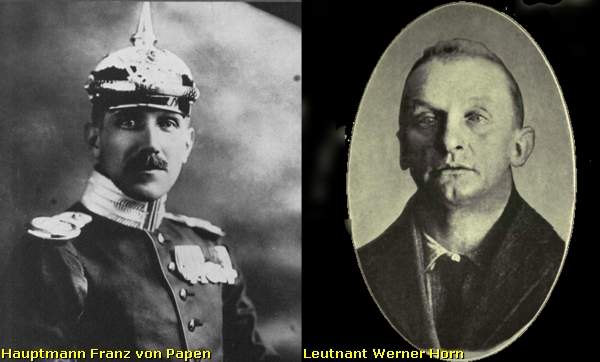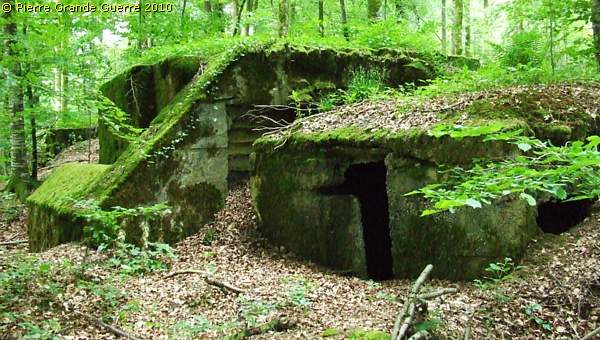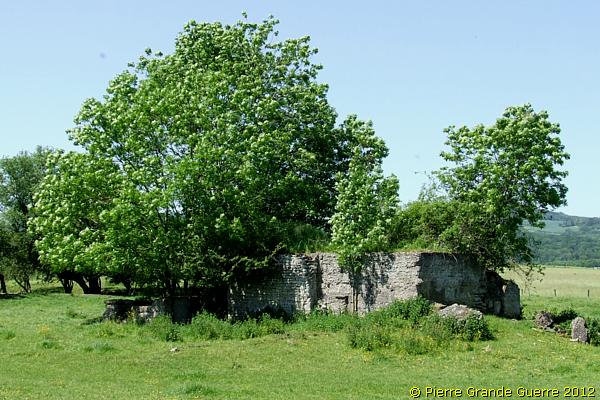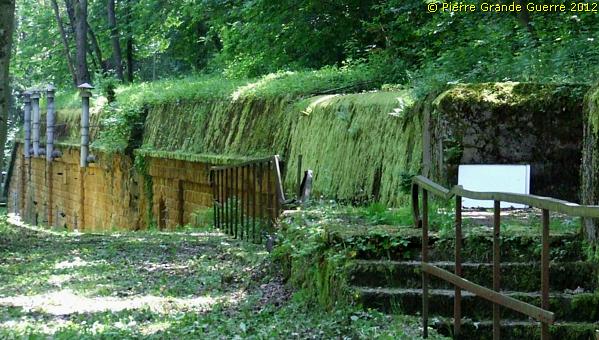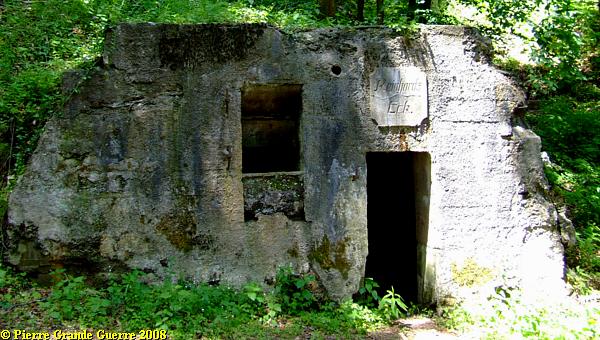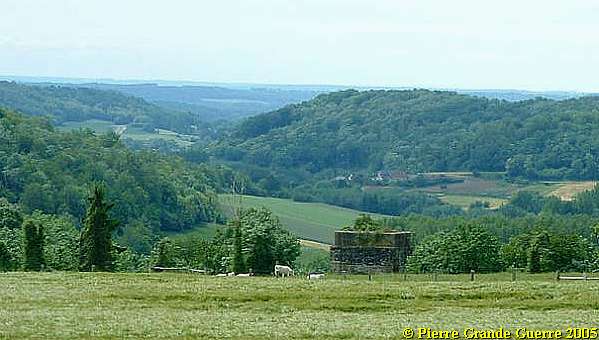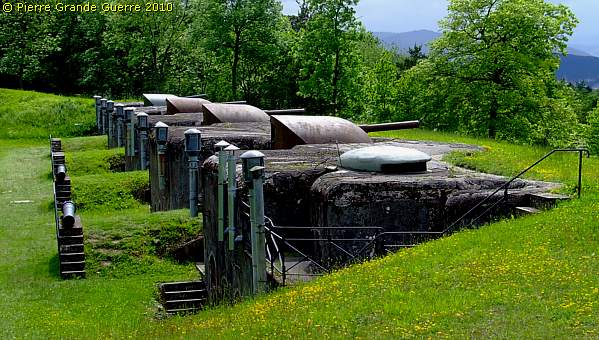MARNE 1918 - Château Thierry - Belleau Wood
Year of visit: 2008
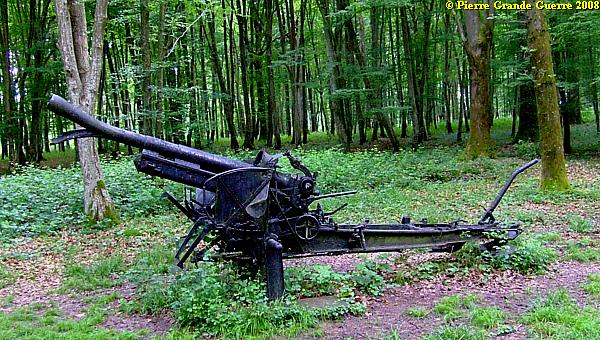
A visit to important Marne locations of the advance of the American 2nd and 3rd Divisions, and in particular the 4th U.S. Marine Brigade during the period from 31 May until 26 June 1918: Château Thierry, Lucy le Bocage, Bouresches, and Belleau Wood.
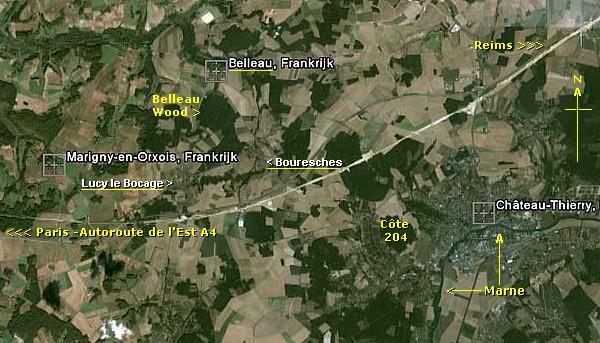
Château Thierry, Côte 204, Hill 204: the rear of the American Aisne - Marne Monument .

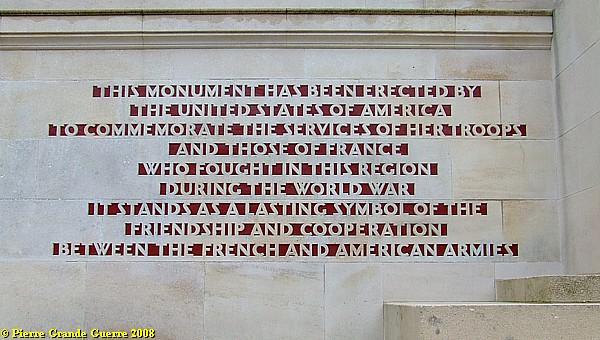
Ludendorff's 1918 German offensives

From 21 March 1918 Generalquartiermeister Ludendorff launched a series of spring offensives, which later will be called the "Kaiser's Battle", or the "Kaiserschlacht". After 3 years of a stalemate situation along the Western Front, open mobile war broke out.
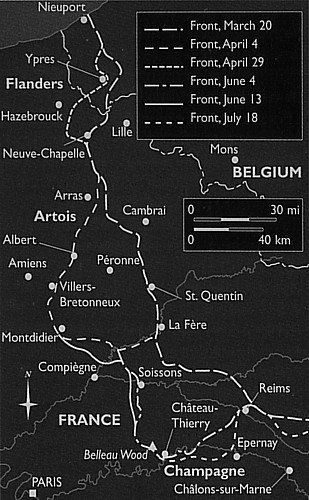
On 26 May 1918 Ludendorff launched the Blücher - Yorck Offensive. The Germans penetrated 65 km. into the former battlefield of the Marne of 1914. They threatened the important road from Paris to Reims.
On 31 May 1918 the German IV Reserve Corps of General Conta, part of General Von Böhn's 7th Army, threatened the east of Hill 204 near Château Thierry, which is only 90 km. away from Paris.
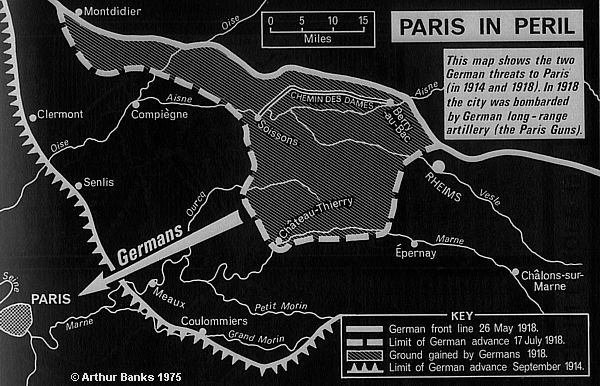
On the height of this crisis General Foch requested General Pershing to assist the troops of General Degoutte's 6th Army. Pershing ordered Major-General Dickman at his headquarters at Marigny; his 3rd Division had to attack the Germans at Hill 204 on 1 June 1918. His 2nd Divison had to attack some days later Bouresches and Belleau Wood.
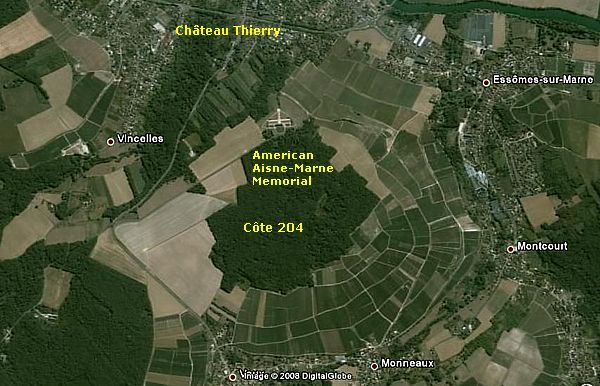
The front of the Memorial.
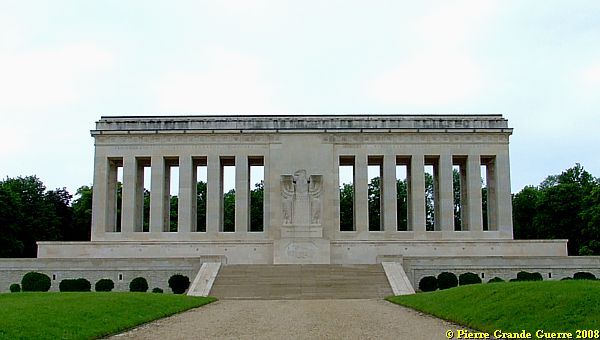
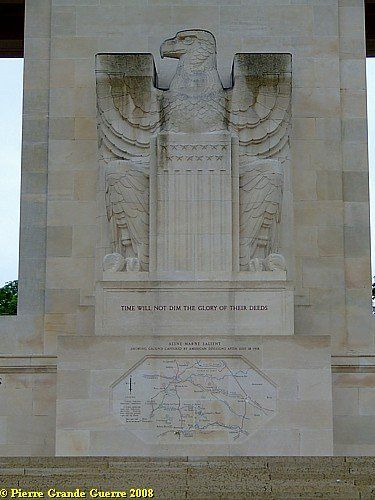
The Memorial shows a map of the American advances after 18 July 1918, the Second Battle of the Marne . (See later next chapter.)
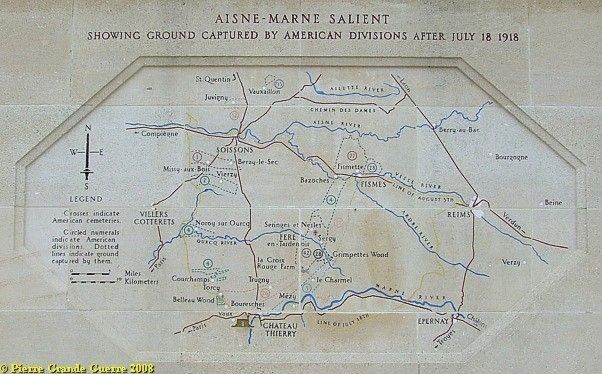
A wall plaque commemorates the American Divisions, involved at the Battle for Belleau Wood (5 June-26 June 1918), and the Divisions, which participated in the Second Battle of the Marne (18 July-4 August 1918).
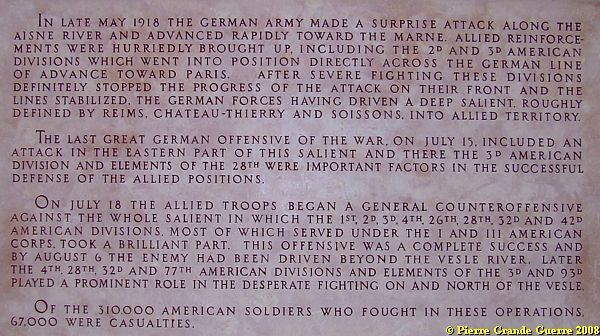
The Aisne Marne Memorial overlooks the Marne valley.

Panorama from the Memorial northward over Château Thierry. From left to right ...
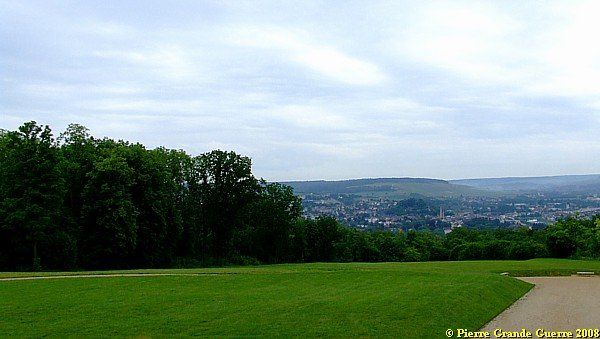
The American 3rd Division halted the Germans on Hill 204 on 7 June 1918.
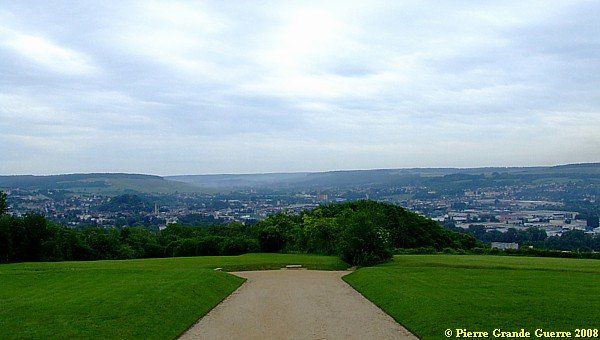
But the 26th and 3rd Divisions would take the hill definitely on 21 July 1918, during the Second Battle of the Marne.

The US 2nd Division

The French 43rd Division of XXI Army Corps defended the important Paris-Château Thierry-Reims road near Lucy le Bocage and south of Bouresches.
On 1 June 1918 the 2nd Division relieved the French troops in Lucy le Bocage.
Lucy le Bocage village.
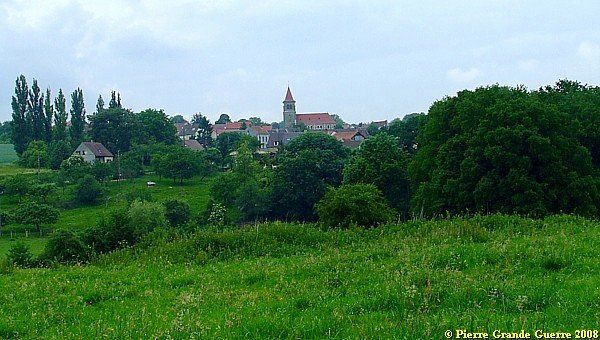
Demarcation boulder in the centre of the village, symbolising the advance of the American 2nd Division.
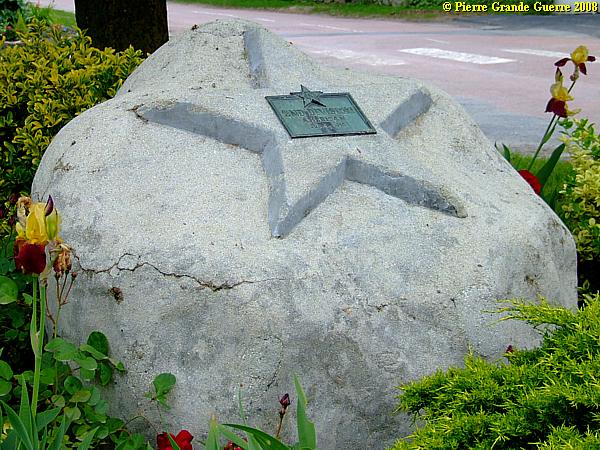
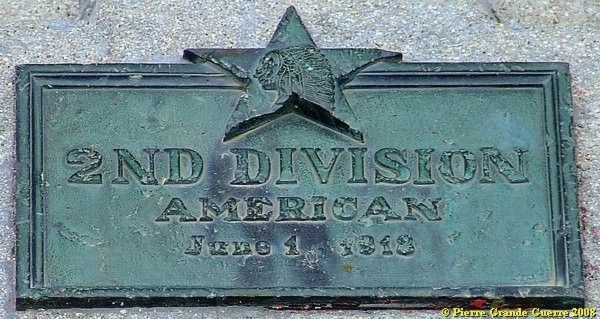
The 4th Marines Brigade attacks Bouresches from Lucy le Bocage
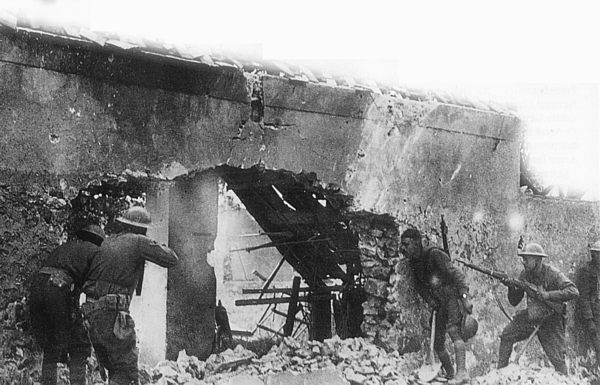
For the next three days and nights the Division consolidated it's positions in the village under heavy German artillery fire from Belleau Wood and Bouresches.
On 5 June 1918 Brigadier-General James Harbord, commander of the 4th Marines Brigade, ordered to attack Bouresches from Lucy le Bocage. On the left flank of the 2nd Division fought the French 167th Division, on the right flank fought the American 3rd Division. Bouresches was defended by more than 1.000 German soldiers of the 461st Infantry Regiment (I.R. 461). At the loss of 1.087 casualties the 2nd and 3rd Division conquered Bouresches on 6 June 1918.
The road to
Bouresches.
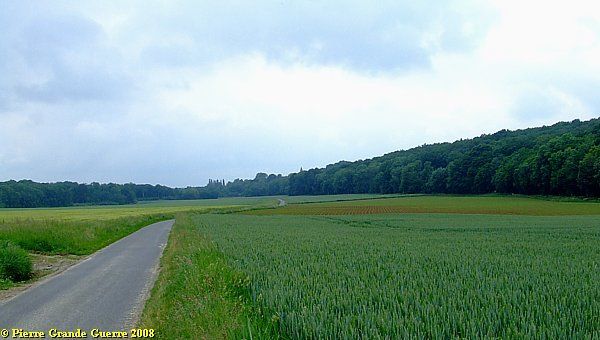

Demarcation boulder on the outskirts of Bouresches.

6 June 1918 - Attack Belleau Wood

On 6 June 1918 the U.S. Marines attacked Belleau Wood on Hill 145, from the south and east, from Lucy le Bocage and Bouresches.
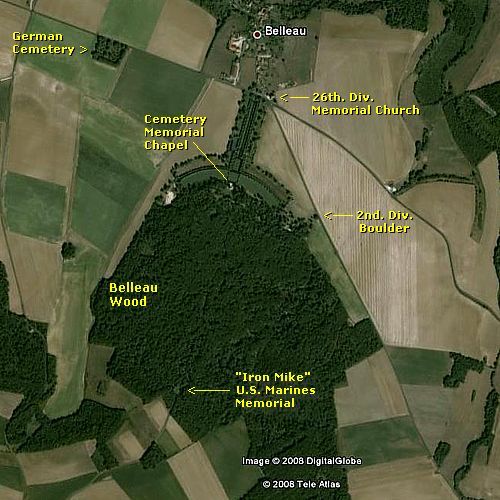
The southern entrance to Bois Belleau, Belleau Wood.
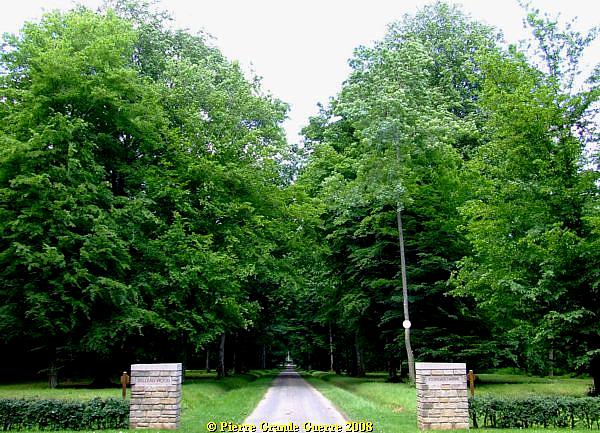
After the war "Bois Belleau" has been renamed "Wood of the Marine Brigade".
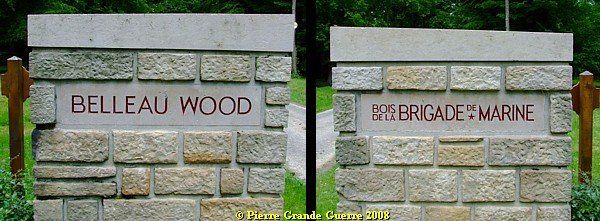
At a clearance in Belleau Wood is a Memorial, dedicated to the U.S. 4th Marine Brigade, composed from the 5th and 6th Marine Regiments.
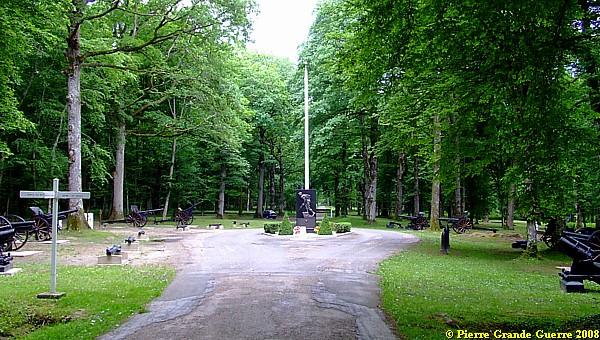
It represents "Iron Mike", an attacking Marine.
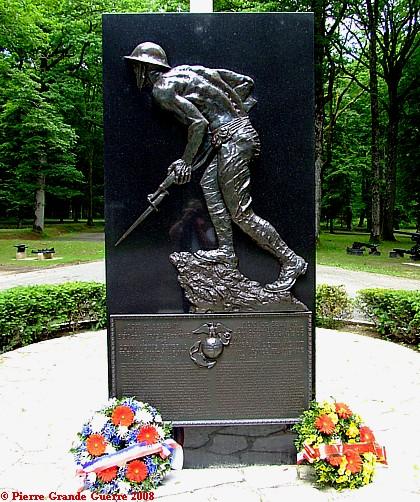
Iron Mike symbolizes also the ferocity of the Marines, during frequent bayonet and hand-to-hand combats in the wood. The ferocity of the Marines is perhaps best expressed by a typical quote of Sergeant Major Daly (MOH twice!): "Come on, you sons of bitches, do you want to live forever?"
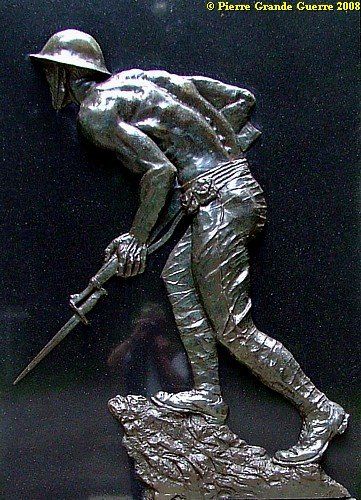
The bronze plaque below the bas reliëf records, that on 30 June 1918 General Degoutte of the French 6th Army renamed the wood officially in "Bois de la Brigade de Marine", ....

... in recognition for the heroic acts of the 4th Marine Brigade of the 2nd Division. The French government also awarded the 4th Brigade the Croix de Guerre.
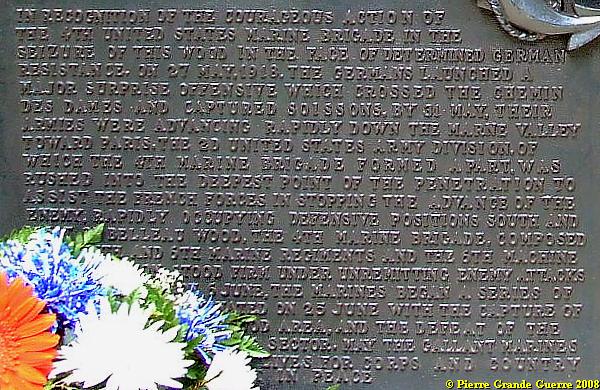
At the clearance around "Iron Mike"...

... is a modest exposition of the spoils of war, like this mortar, ...
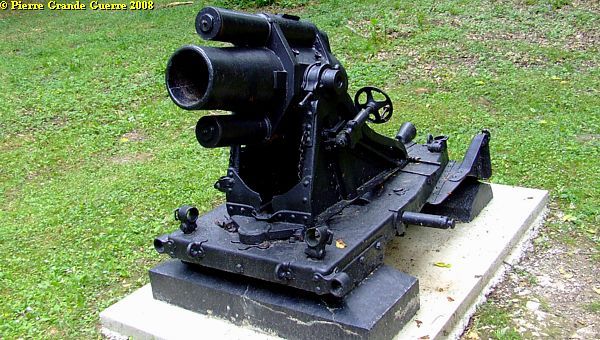
... and several types of German artillery guns, mainly 77 mm field artillery guns ...

...captured on the Germans.
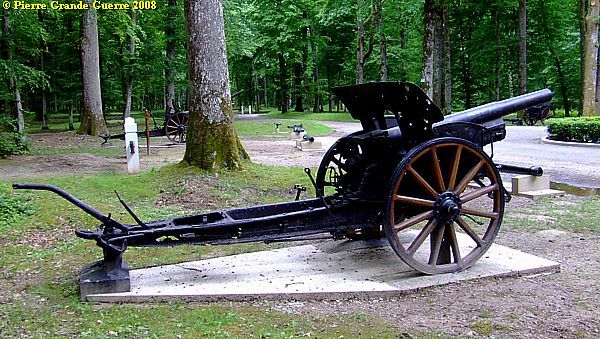
The Marines faced German units of 5 Divisions.
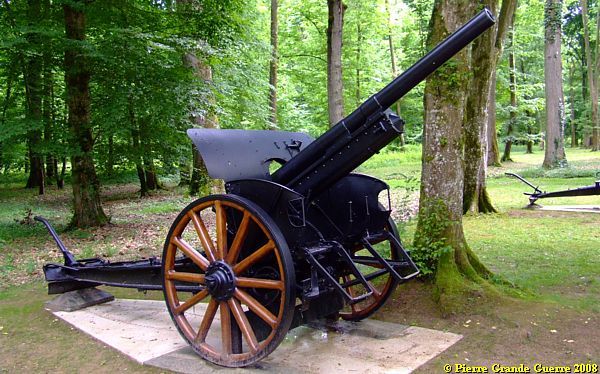
The wood was defended by units of the 237th, 10th, 197th, 87th and 28th Divisions.
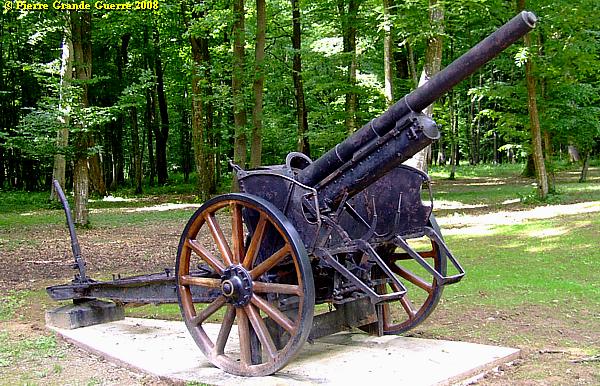
The wood formed the deepest point of penetration by the Germans.
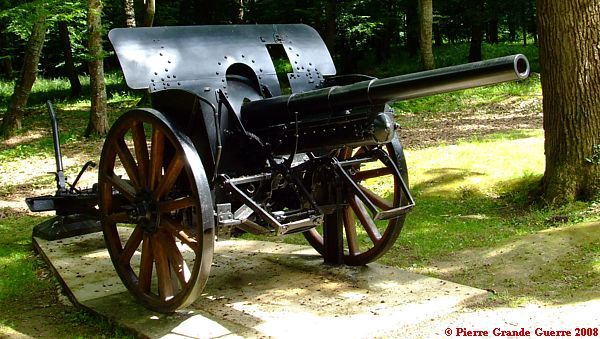
We leave the clearance to stroll in the wood for traces of the fights.
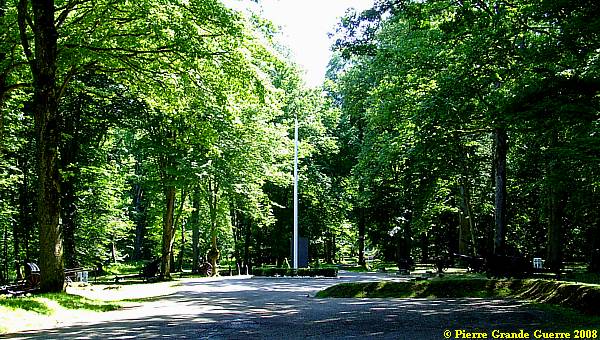
Some apparent ditches in the wood are traces of trenches.
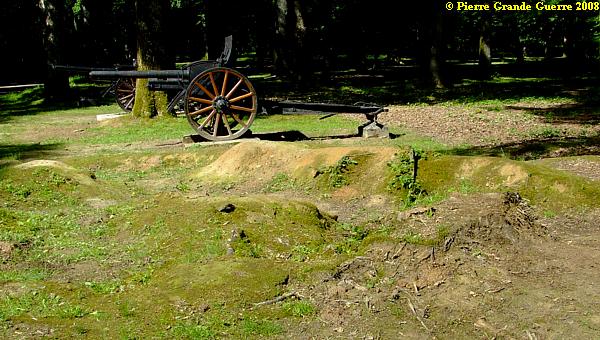

The history of the Marines during the Battle at Belleau Wood is told on six bronze bilingual floor plaques.
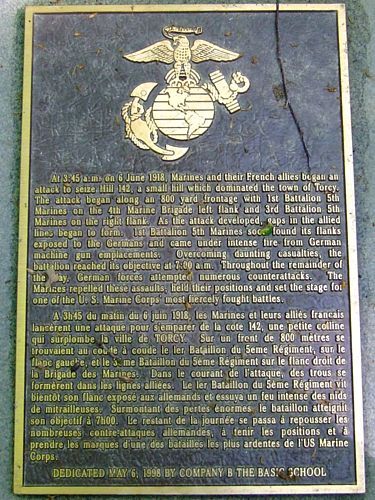
I zoomed in on the next English passages for you. 6 June 1918:

On the surface of the wood there are many traces of shell holes.
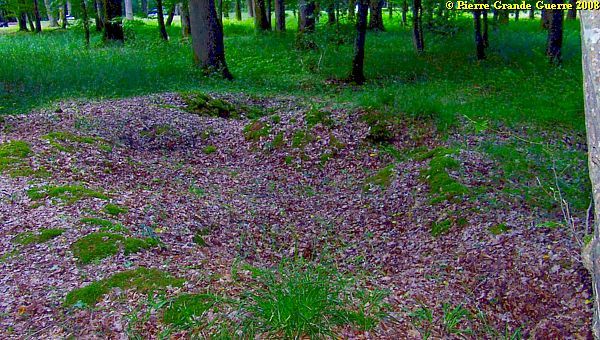
The second bronze plaque continues the story of the Marines in the afternoon of 6 June 1918:
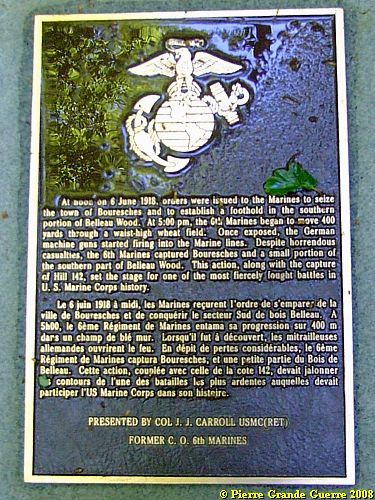
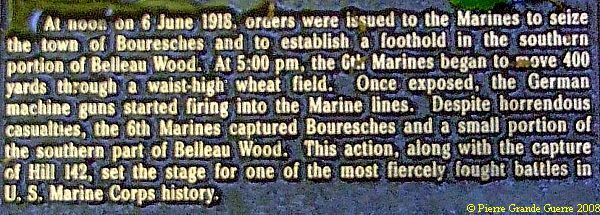
Another trace of a trench.
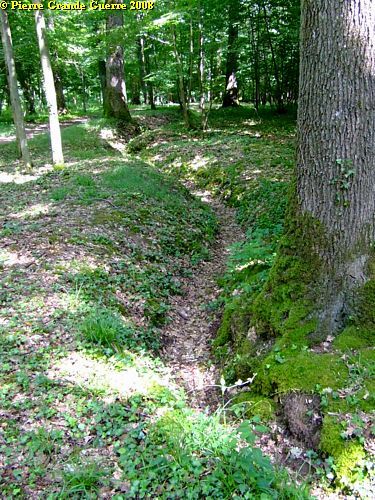
The third bronze plaque continues about the events on 8 June:
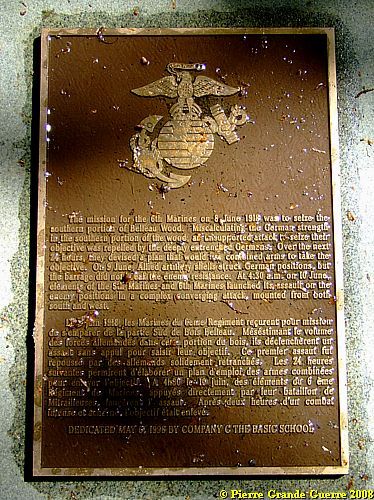

Trench relic near the spot of the bronze plaques.
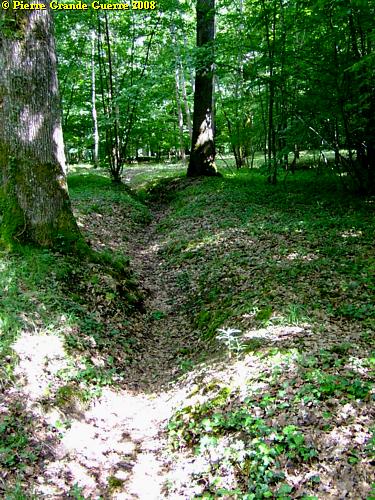
The fourth bronze plaques tells about the events on 11 June 1918.
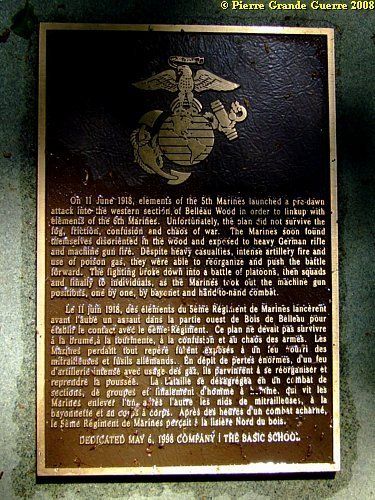

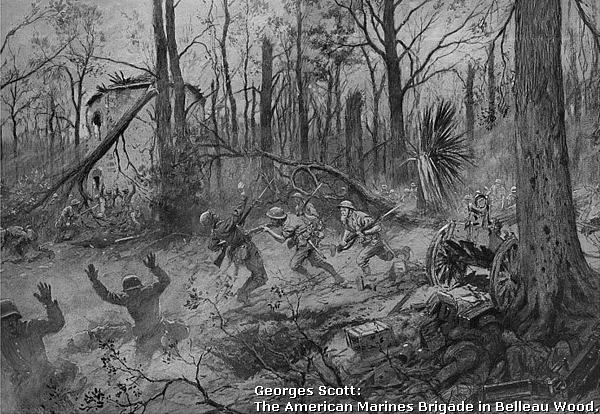
On the top of Hill 145, the ruine of a prewar chapel.
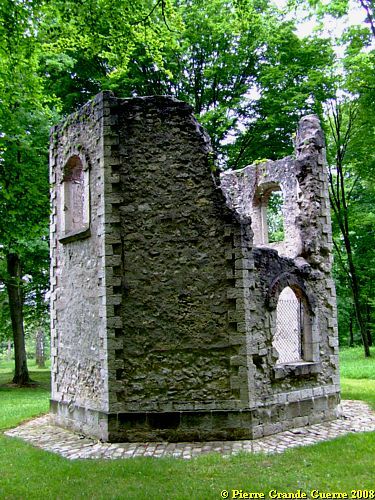
The fifth plaque tells about the period of 23-26 June 1918.
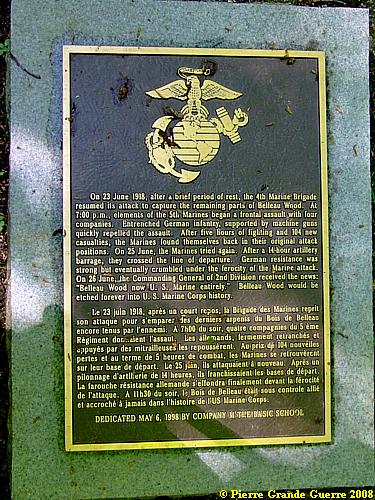
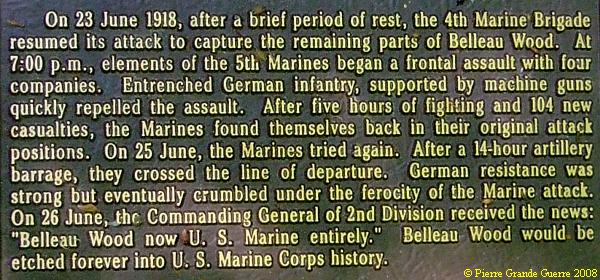
On 26 June 1918 the momentum of the German attack at the Marne had been halted.
Somewhere in the wood, a gun with a split barrel! Perhaps an explosion of a premature round?
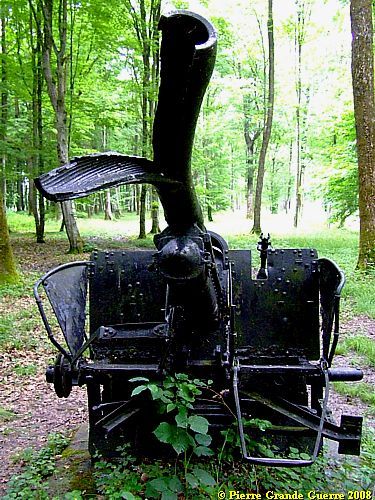
The 6th bronze plaque records 4 officers, ...

... awarded with a Medal of Honour for conspicious gallantry.

The Marine Corps lost more men on June 6, than it had in all the rest of its history. The 4th Brigade suffered 31 officer casualties and 1.056 enlisted men of those numbers. Six officers and 222 enlisted men were killed, or died later of their wounds.
After the battles in and around Belleau Wood all involved U.S. forces suffered a total of 9.777 casualties, 1.118 of them killed.

We continue to the northern edge, and leave Belleau Wood.
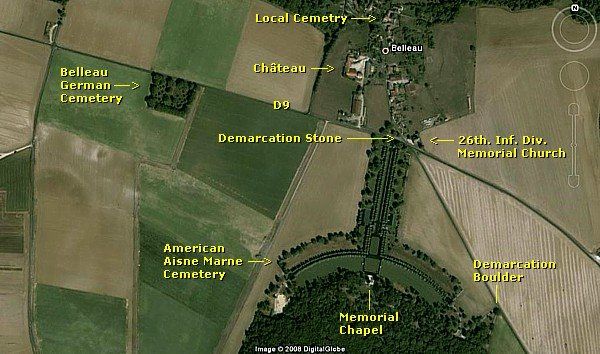
We pass this third 2nd Division Demarcation boulder at the northwest edge of Belleau Wood.
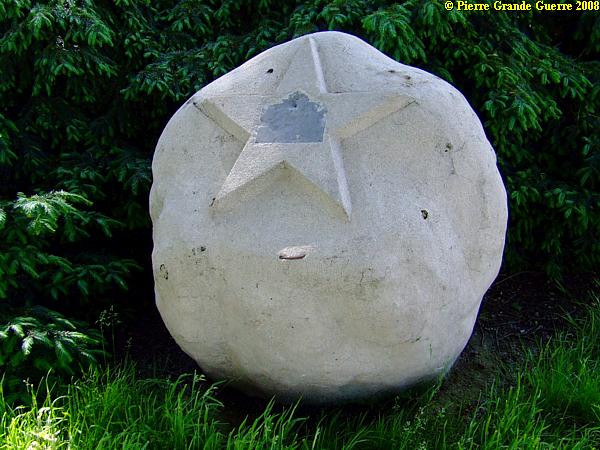
From a further distance, a view at the northern edge of Belleau Wood.

Entrance to the American Aisne Marne Cemetery . The cemetery lies at the northern foot of Hill 145.
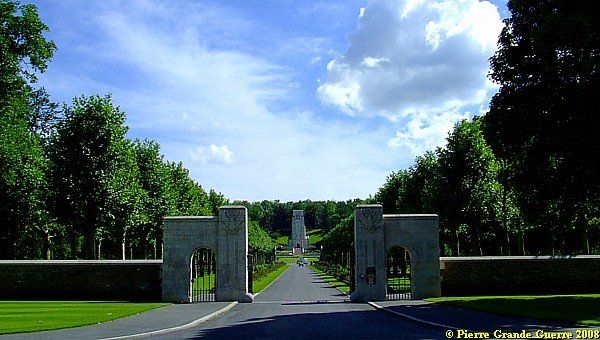
It has been created in a T-shape with 2 half curves.
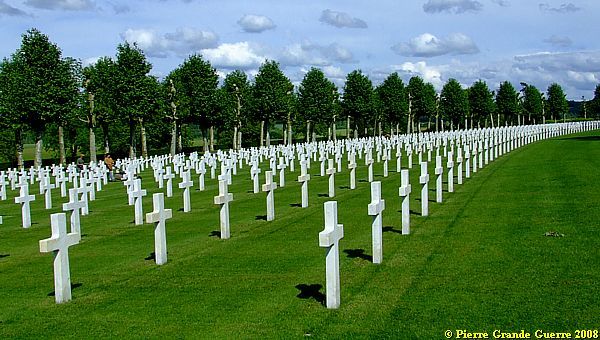
The Memorial Chapel.
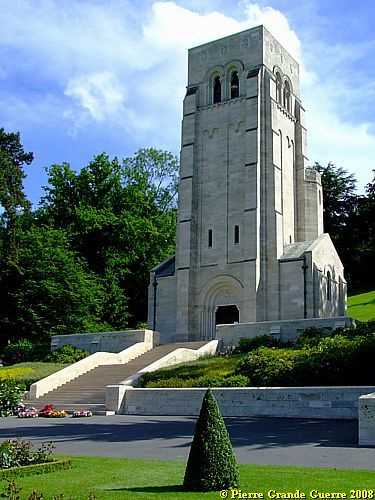
The interior of the Memorial Chapel is dedicated ...
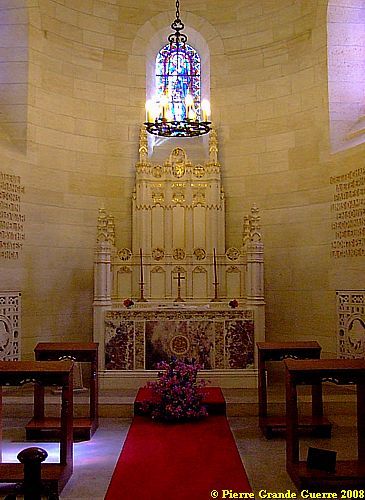
... to the 1.060 American soldiers, killed in this area, ...

... but who have no known grave.

The names of the missing soldiers are inscripted on the walls.

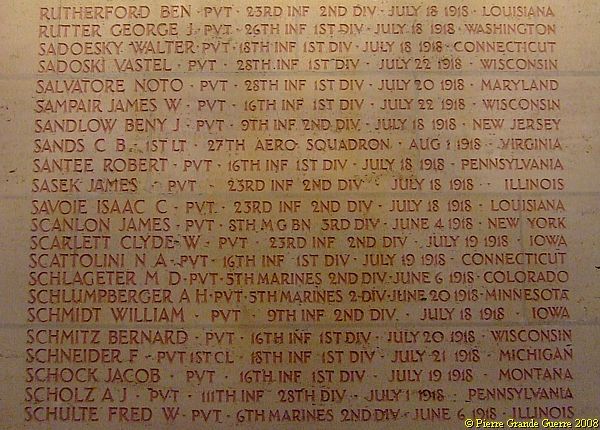
The Memorial Chapel is also dedicated to all American soldiers, who fell during the Great War.
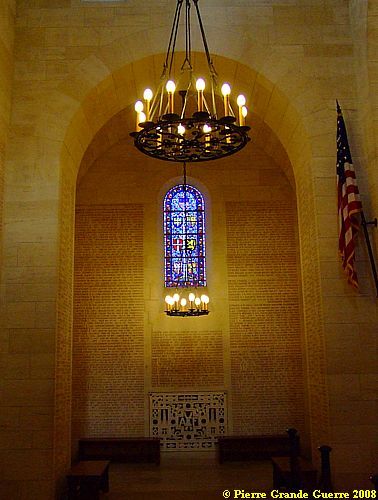
We leave the Memorial Chapel. The wreaths has been laid a few days before, during the yearly memorial ceremony on 25 May.
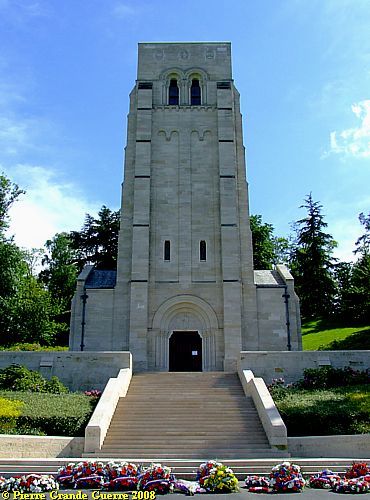
The cemetery contains the graves of 2.289 American soldiers, killed at Belleau Wood, or some weeks later during the Second Battle of the Marne.

251 Amongst them are unidentified.
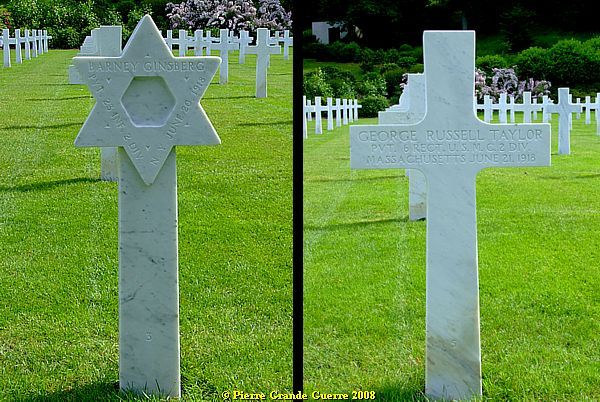
We leave the cemetery for the village of Belleau, ...
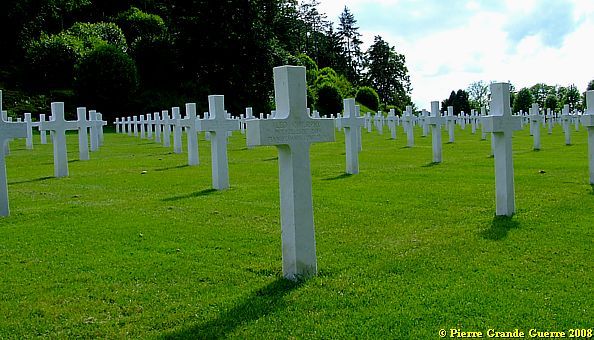
... on the other side of the road, D 9.
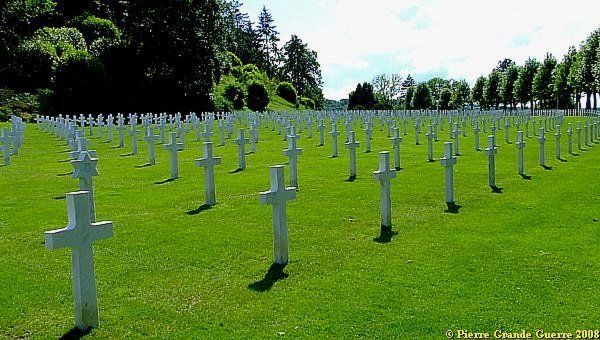
Opposite the cemetery at the entrance to Belleau village stands a demarcation stone. The stone lies on the location, where the 2n. Division dug itself in in trenches, after the capture of Belleau Wood on 25 June. But Belleau village was not yet taken that day!
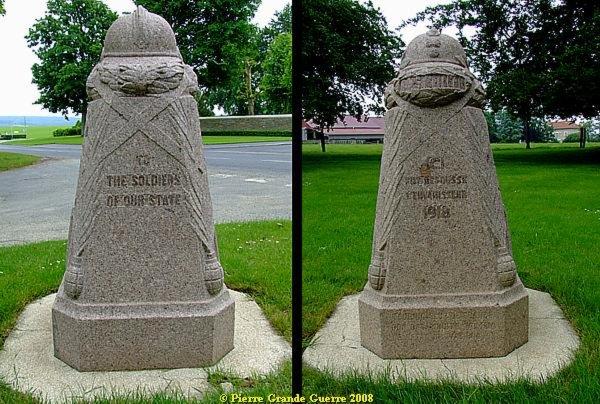
It was the 26th Infantry Division, the "Yankee Division", which conquered the village on 18 July 1918. Next to the demarcation stone; the 26th Infantry Division Memorial Church.

Inside on the walls: inscripted names of the 2.700 soldiers of the 26th Infantry Division, fallen during the Great War in France.

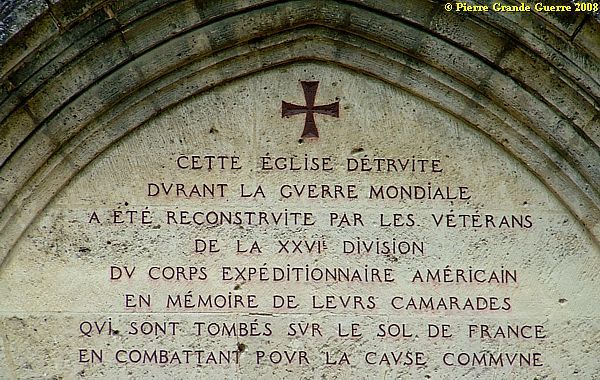
In the small village a memorial drinking fountain, ...
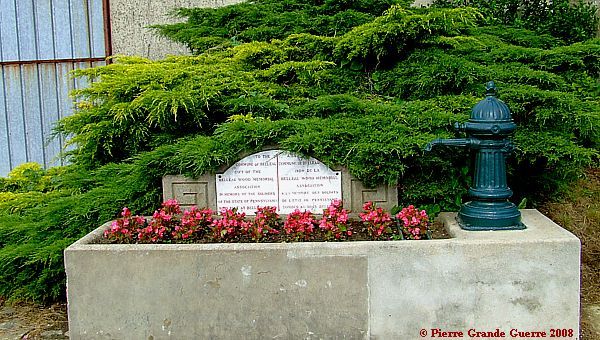
... commemorating the fallen Pennsylvanian soldiers.
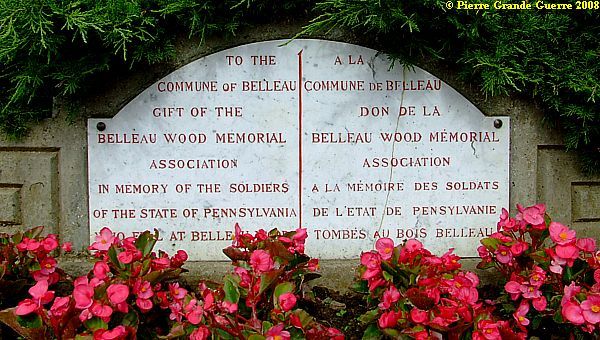
The Château de Belleau de Beaucaron.

At the (private) courtyard of the Château is another memorial drinking fountain.

Belleau Wood is also the battlefield, where the Marines got their German nickname "Teufel Hunden", "Devil Dogs", for the ferocity with which they attacked the German lines.
The memorial Devil Dog / Bulldog Fountain.
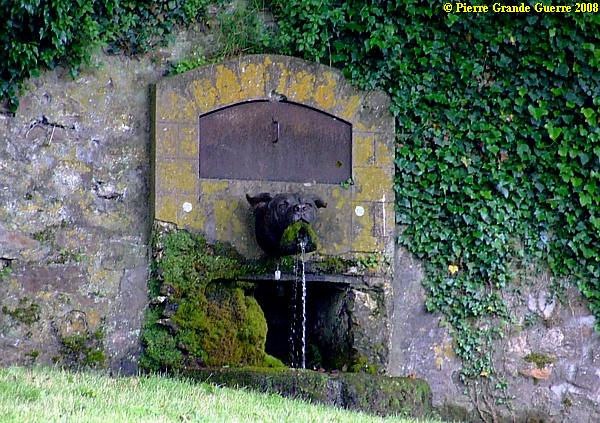
At the north edge of the village we visit the local cemetery.

We visit the grave of Ernest Stricker, who claimed to have fought in Belleau Wood.
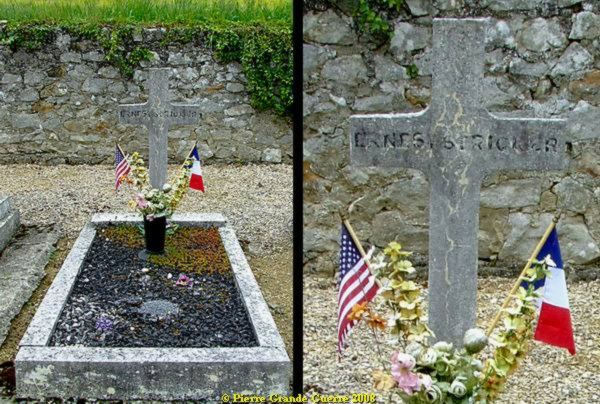
On 28 April 1928 Stricker shot himself at the war cemetery, leaving a note with his wish to be buried with his comrades of arms. Instead Stricker was buried here in the local cemetery.
With a view at a French Memorial for 10 fallen "Sons of Belleau", we leave the village to continue to the southwest of the village.
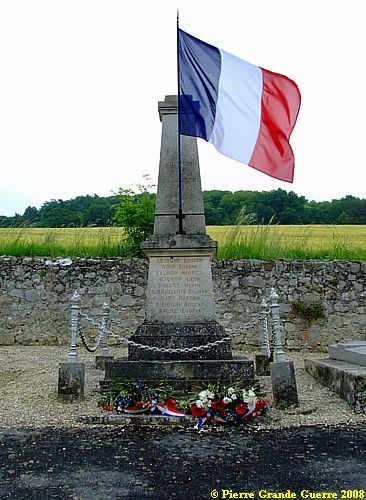
Along the D 9: The " Deutsche Kriegsgräberstätte Belleau ", the Belleau German War Cemetery.
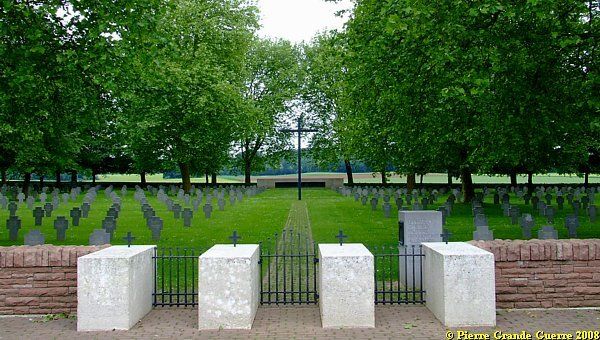
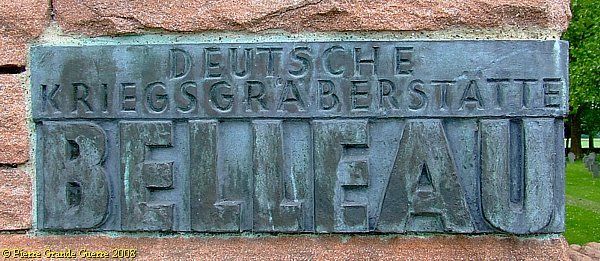

These burials are from this area, mainly of the period of June 1918, and of the Second Battle of the Marne of 18 July and later. 70 of the graves belong to soldiers killed in 1914.
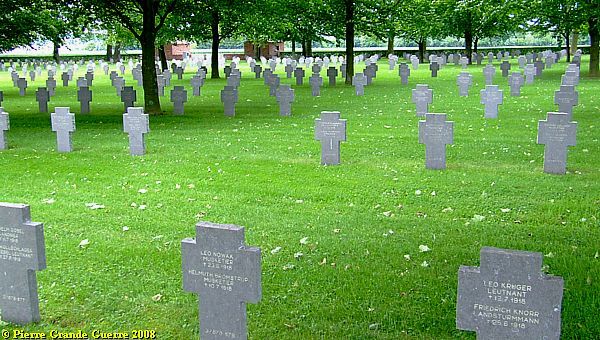
At Belleau Wood the Marines made some 1.600 Germans prisoner.

The exact numbers of wounded, missing, or dead Germans are still not clear.

But the numbers, mentioned on the inscriptions in the cemetery, ...
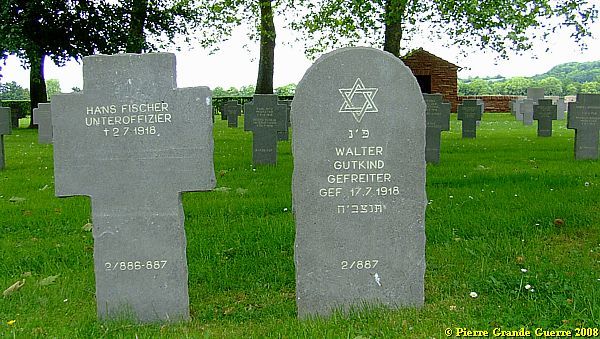
... offer us an impression, how high the death toll for the Germans must have been in this rather small area.
A mass grave at the rear of the cemetery.
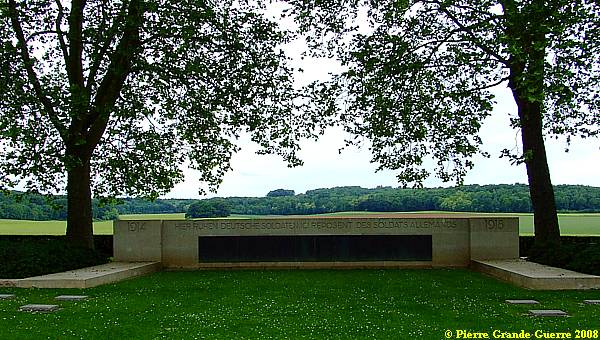
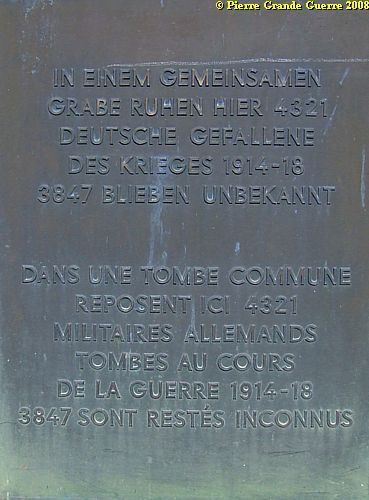
As always on German Mass graves: bronze plaques with endless lists of names.

A view over the mass grave to Belleau Wood.
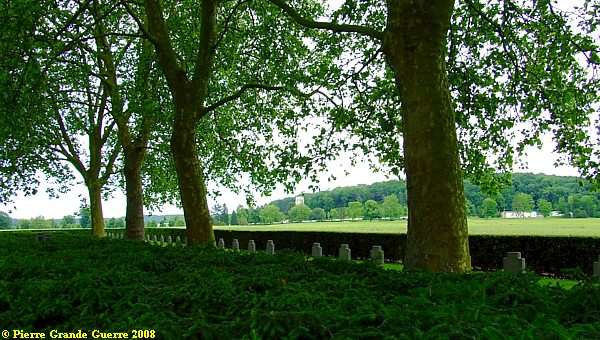
Notice the close by, towering American Memorial Chapel.

We leave Belleau. In the next photo impression we will visit some interesting locations of the Second Battle of the Marne (18 July-4 August 1918).
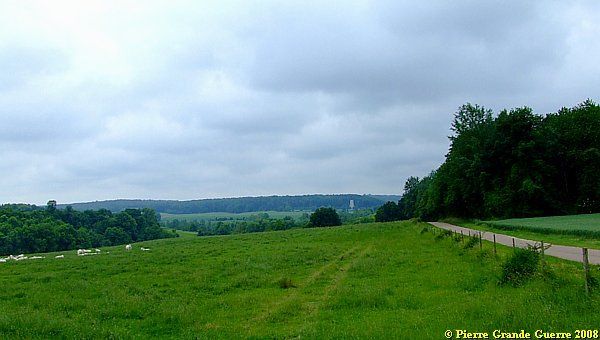
Continue to: " The Second Battle of the Marne - 1918 "
